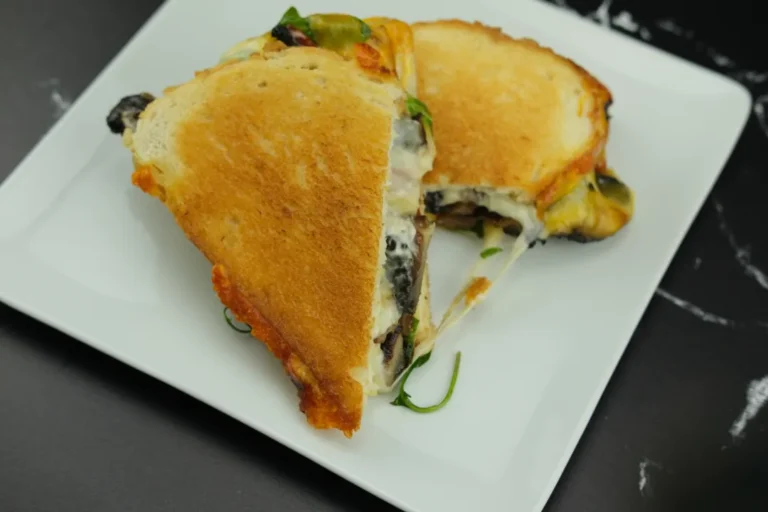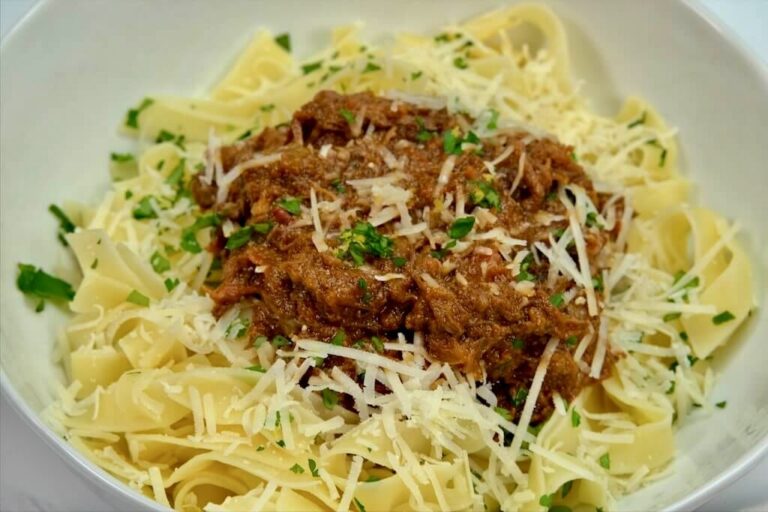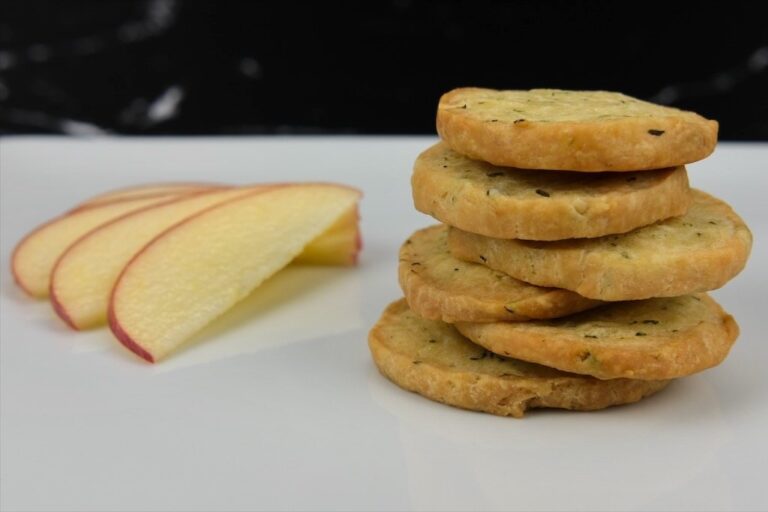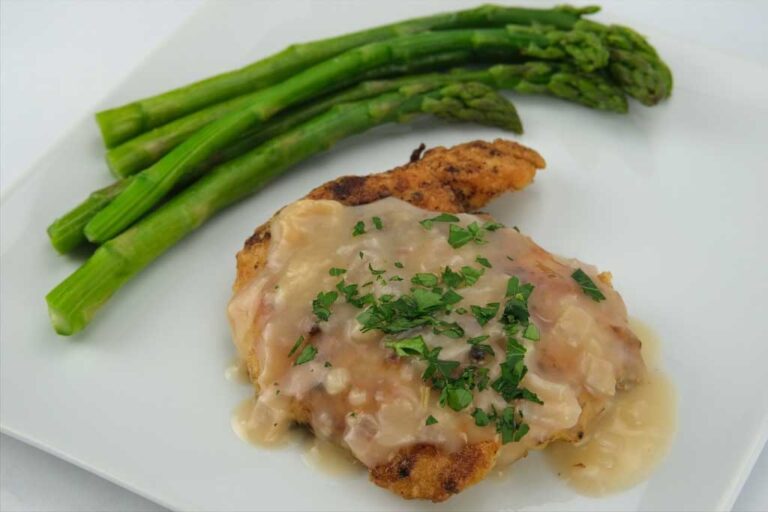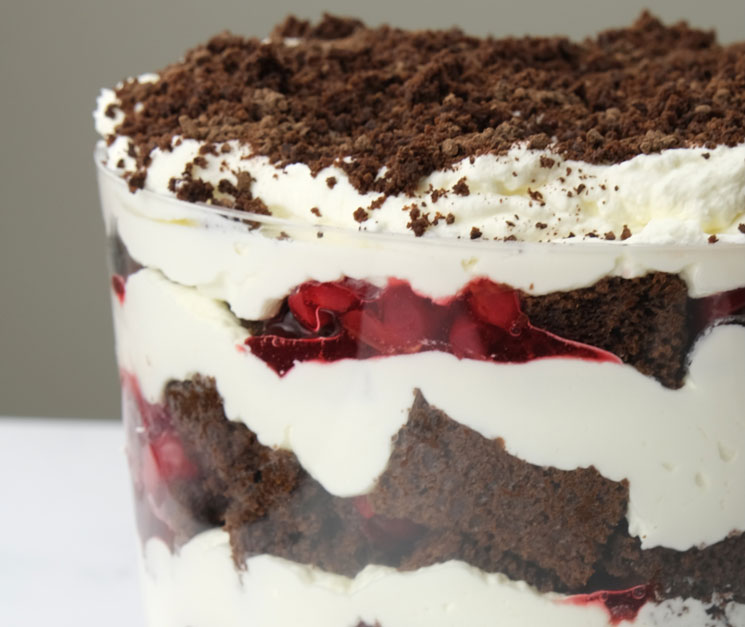Crispy, Savory Potstickers
About this Recipe
By: Rachel
Lunar New Year is a major festival celebrated throughout East Asia, and by those of East Asian descent around the world. Although this spring festival is commonly referred to as “Chinese New Year,” it may also be referred to as “Lunar New Year,” since it is a major holiday not just in China, but in many other countries, including Taiwan, Vietnam, North and South Korea, Malaysia, Philippines, Indonesia, Singapore, and Brunei.
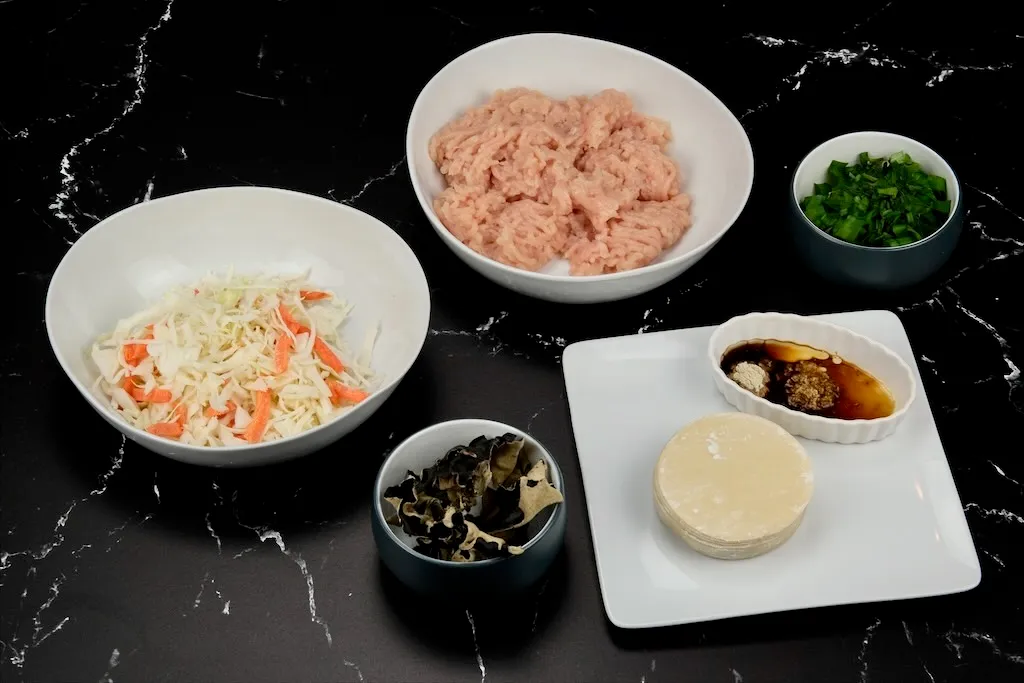
Each country and culture has their own unique traditions associated with this important holiday. Common traditions include wearing red, said to be an auspicious color, and gifting “lucky money” to children in red envelopes. Dishes prepared for the holiday vary, and serve the symbolic purpose of bringing luck, good fortune and longevity in the year to come.
In China, a whole fish is often served, since the Mandarin word for fish is similar to the word for “surplus.” Sticky rice, said to represent togetherness, is a frequent dish on the Lunar New Year table, in the form of bánh chưng in Vietnam, tikoy in the Philippines, or tteokguk in Korea, where rice cakes are said to represent coins. Long noodles may be served to represent long life, while oranges are often served as their color represents gold.
Dumplings are often served for the holiday, as they are said to represent pouches of money to bring prosperity to the diner. The fillings, wrappings, and preparations vary considerably from country to country, region to region, and family to family. Savory dumplings might contain any combination of meat, poultry, seafood, or vegetables; sweet dumplings might contain pastes made of nuts, sesame, red beans, or egg yolk.
Once stuffed and prepared, dumplings may be boiled, steamed, fried, or—my favorite—a combination method of frying and steaming to create potstickers, since at first the dumplings stick to the bottom of your pan. To make them, you sear the dumpling in oil, then quickly add water and cover, allowing the steam to finish cooking your dumplings and releasing them from the bottom of the pan. To me, it is the best of both worlds, offering a crispy, caramelized texture on one side and a wonderfully soft, chewy texture on the other.
Read on for some of my favorite dumpling preparations, and suggestions for creating combinations of your own. Whatever combination you choose, be sure that your dumplings contain a balance of aromatic flavors, seasonings, fat content, and moisture to provide juiciness.
Finally, I highly recommend checking out the following sources, which helped me learn about different dumpling preparations for this post:
The Food of Taiwan: Recipes from the Beautiful Island, by Cathy Erway
The Dumpling Galaxy Cookbook, by Helen You
Chinese Soul Food, by Hsiao-Ching Chou
Korean Cooking Favorites, by Hyegyoung K. Ford
Red House Spice, blog of Wei Guo
Chef Tu, website of Tu David Phu
Guide To Building Amazing Potstickers
Choose as many ingredients from as many columns as you like to build your signature dumpling.

Crispy, Savory Potstickers
Ingredients
For meat potstickers:
- 1 pound (450g) ground turkey thighs, chicken, or pork
- 2 cloves garlic, minced
- ½ cup (30g) finely chopped scallion
- ¼ cup (15g) finely chopped garlic chives or gandana, if available; or regular chives
- 1 cup (25g) dried wood ear mushroom, rehydrated in hot water and finely chopped
- 1 cup (90g) shredded napa cabbage
- ¼ cup (25g) shredded carrot
- 2 teaspoons freshly grated ginger
- 4 tablespoons soy sauce
- 1 tablespoon oyster sauce (I use vegan oyster sauce)
- 2 teaspoons sesame oil
- 1 teaspoon white pepper
- 1 package dumpling wrappers* for stuffing
- Vegetable oil for frying
- 1 recipe dipping sauce (below)
For the Potsticker Dipping Sauce:
- 2 tablespoons soy sauce
- 2 tablespoons rice vinegar
- 1 tablespoon yuzu ponzu
- ½ teaspoon sesame oil
- 1 tablespoon scallion, minced
- 1 teaspoon grated ginger
*Note: Dumpling wrappers are typically available in Asian specialty markets. While they may also be available in mainstream grocery stores, I have found these to generally be lower-quality and very difficult to seal and fold. You can certainly make your own—Red House Spice has an easy-to-follow recipe.
For vegetable potstickers:
- 1 cup (25g) dried wood ear mushroom, rehydrated in hot water and finely chopped
- 1 cup (125g) shiitake mushrooms, finely chopped
- 1 cup (250g) soft tofu, crumbled, or prepared glass noodles
- 2 cloves garlic, minced
- ½ cup (30g) finely chopped scallion
- ¼ cup (15g) finely chopped garlic chives or gandana, if available; or regular chives
- 1 cup (90g) shredded napa cabbage
- 2 teaspoons freshly grated ginger
- 3 tablespoons soy sauce
- 1 tablespoon oyster sauce (I use vegan oyster sauce)
- 2 teaspoons sesame oil
- 1 teaspoon white pepper
- 1 package dumpling wrappers for stuffing
- Vegetable oil for frying
- 1 recipe dipping sauce (above)
Step by Step Instructions
Step 1
- If you plan to serve the dipping sauce, prepare it and set it aside while you make the dumplings so it will be ready when you are ready to serve. Make it by combining the ingredients in a small bowl and mixing with a fork.
Step 2
- To prepare the dumplings, add all of the filling ingredients to a large bowl, and mix well to combine. Test the filling—it should be moist, but if you squeeze a handful of filling between your hands and liquid seeps out, it is too wet and may tear the delicate wrappers. If this is the case, discard any extra liquid before proceeding.
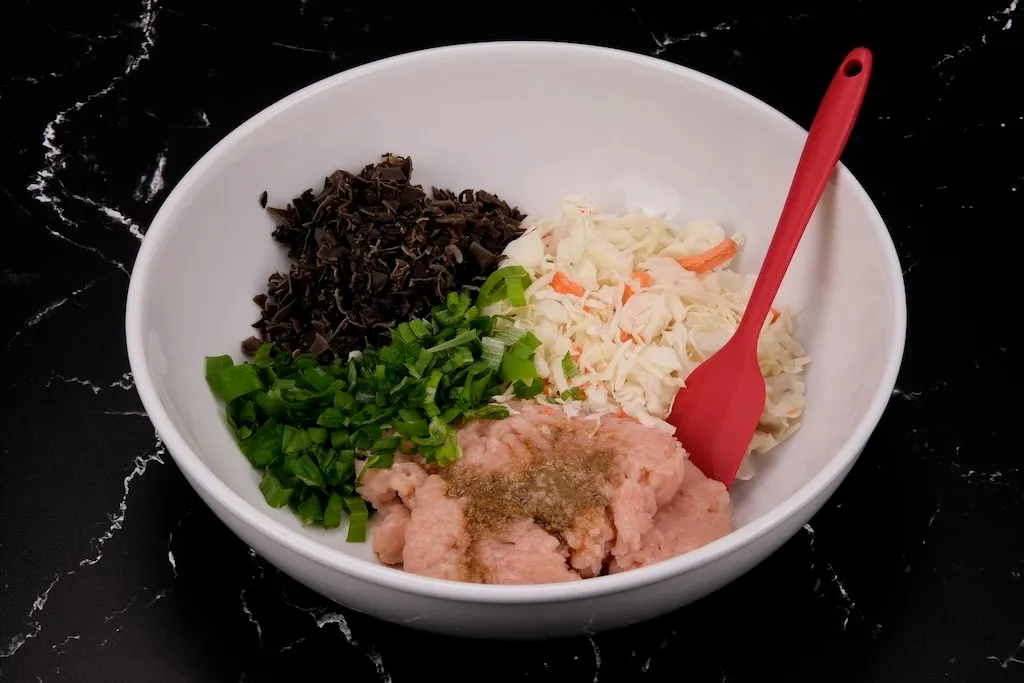
Step 3
- Set up a stuffing station with your stuffing, wrappers, a small bowl of cold water, and a platter for the finished dumplings.
- Since I like to make a large batch to freeze for later, I place them on an extra-large sheet pan lined with parchment. I set aside the ones I plan to eat right away, and freeze the rest on a sheet pan. Once they are fully frozen, you can remove them from the sheet pan and store in your freezer in a labeled, freezer-safe Ziploc bag.
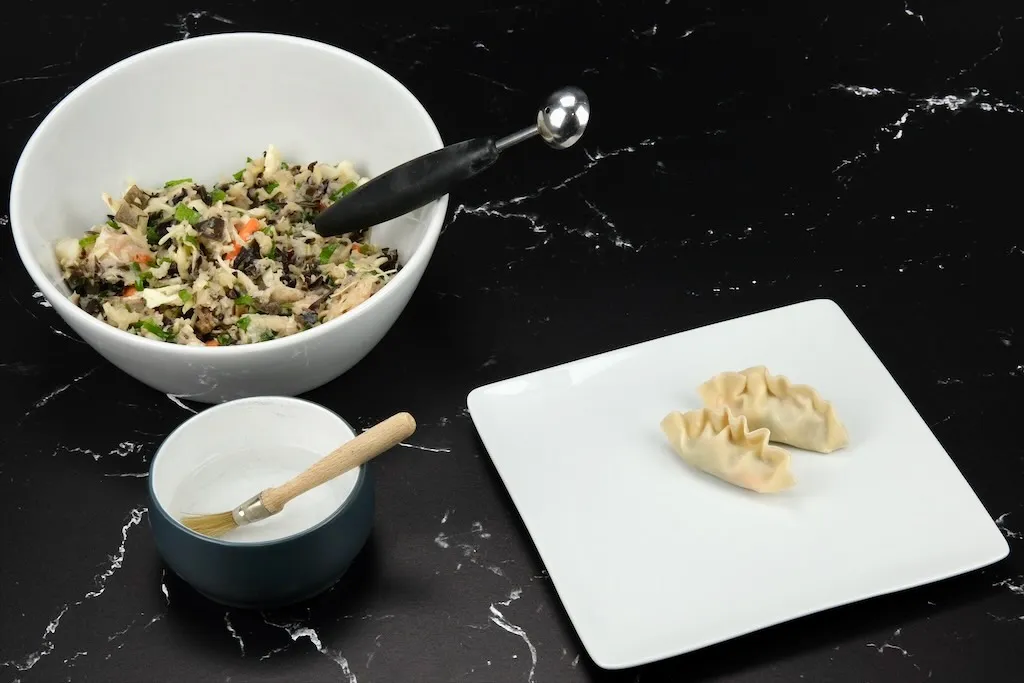
Step 4
- Next, prepare the dumplings. First, run a very small bit of cold water around the outer edge of the wrapper—this will help it to seal properly when you stuff them. Assemble each dumpling by adding about one level tablespoon of filling to the center of the wrapper.
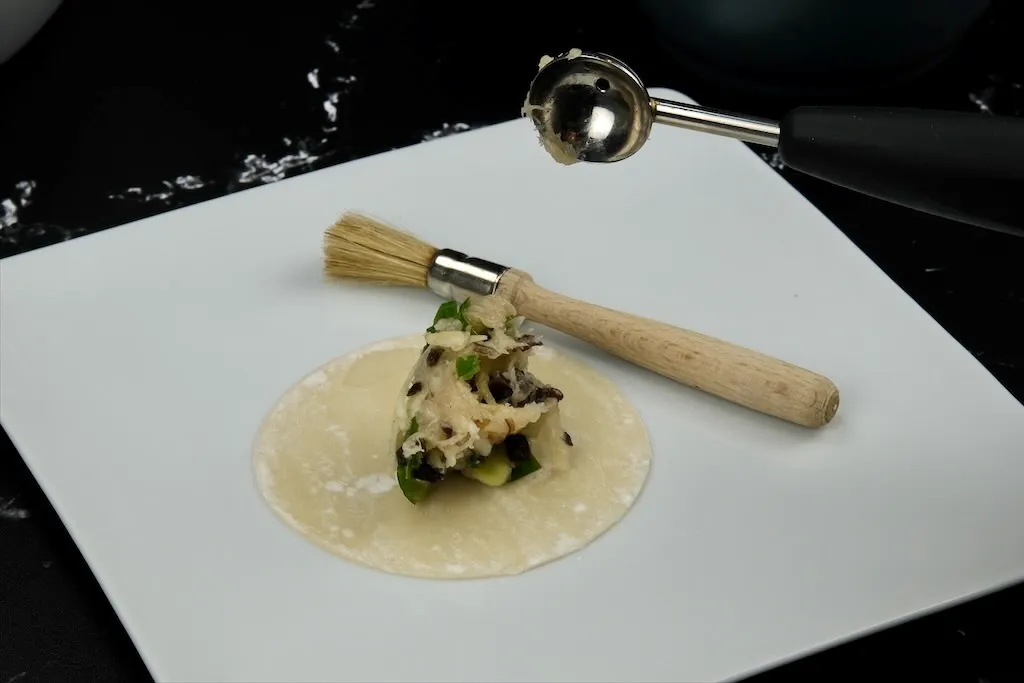
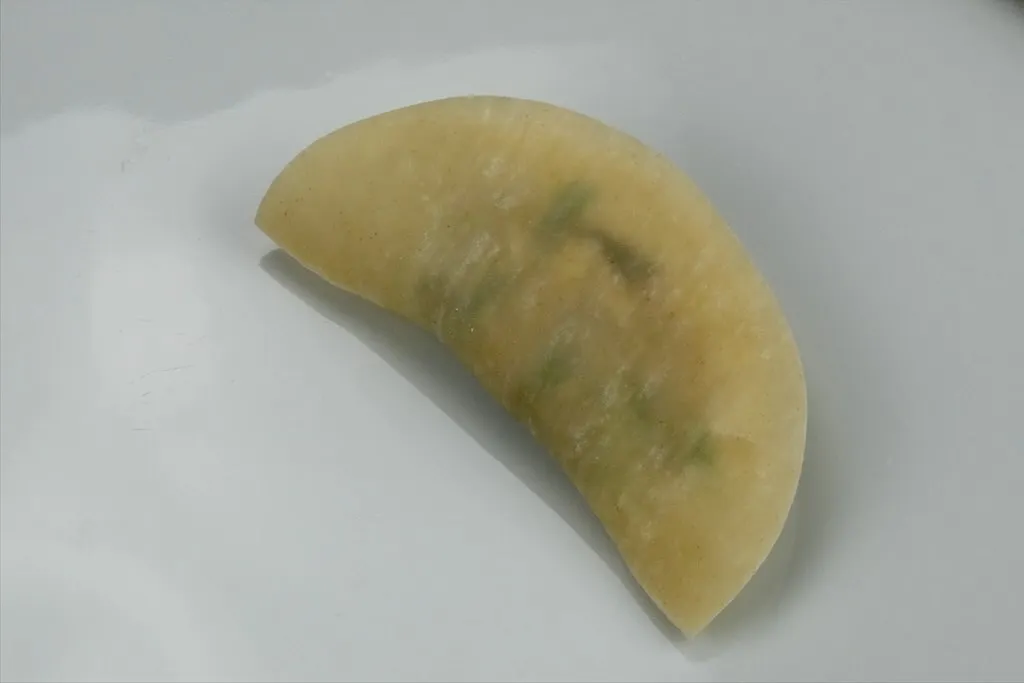
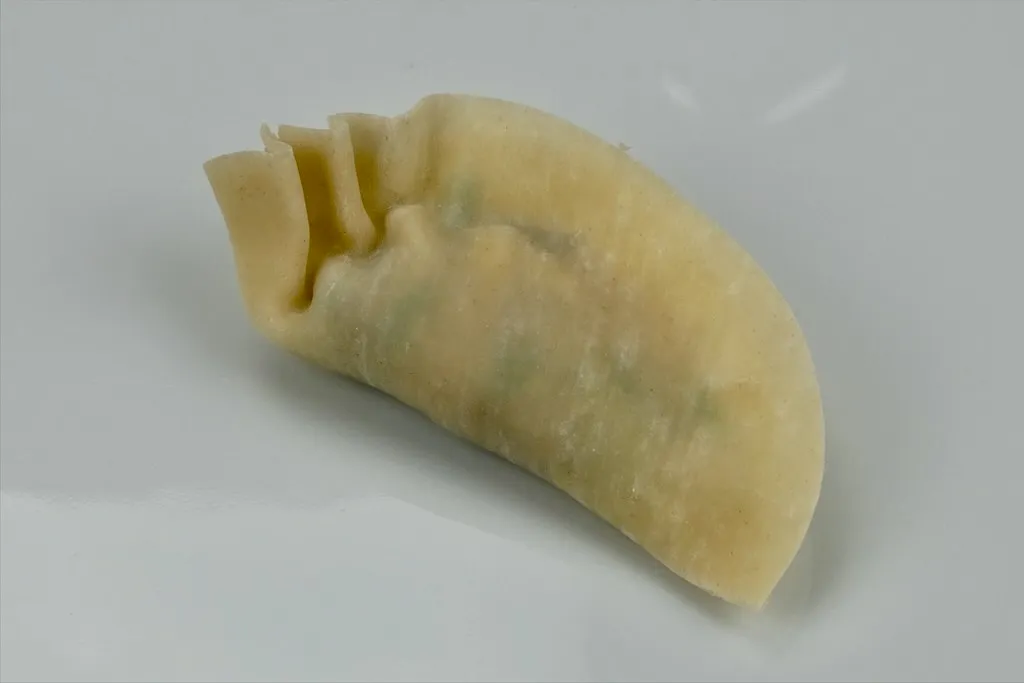
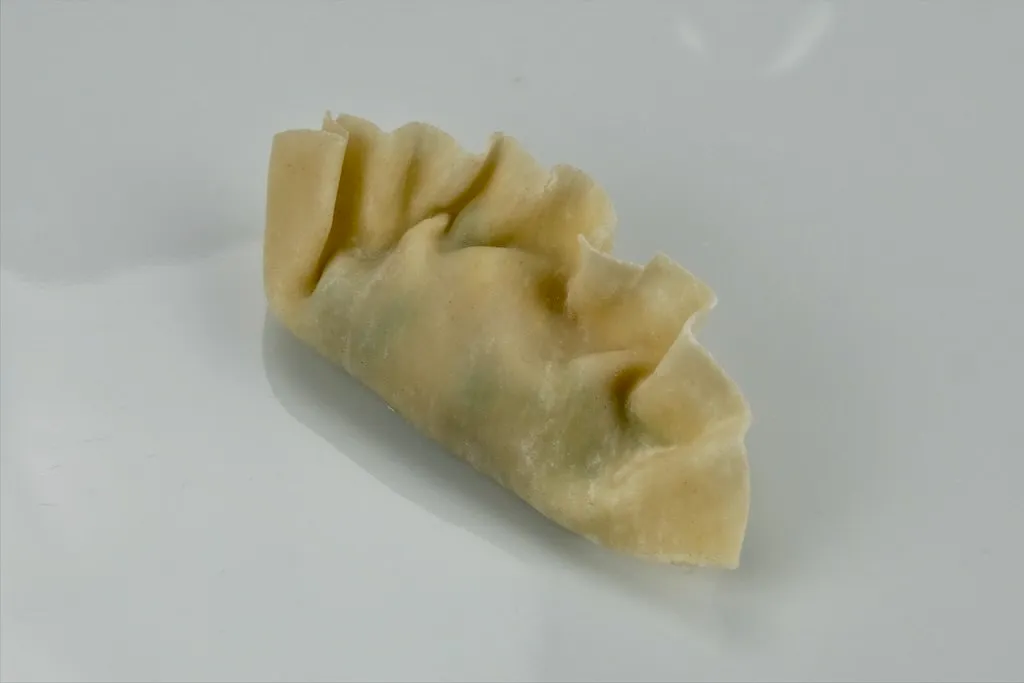
Step 5
- My favorite way to cook these dumplings (because it is easy and mess-free) is to heat my GreenPan Slow-Cooker using the sear function, add about a tablespoon of vegetable oil to the bottom, and cook the dumplings for about 3 minutes, or until a deep brown crust has formed on the underside.
- Then, carefully add about ¼ cup (60mL) cold water, immediately cover with the lid, and steam until the water has evaporated and the dumplings are cooked through, about 3 minutes. You can cut one dumpling in half to check for doneness.
- Carefully remove the dumplings, using tongs or a spatula. When done, they should release easily from the bottom of the pan.
- If you do not have such a slow cooker, simply use a deep, wide skillet with a tightly-fitting, see-through lid, and follow the directions above.
- You are better off starting with less oil and adding more as needed—it is best to wait until the oil has evaporated before adding the water lest the two combine and splatter in a (literal) hot mess.*
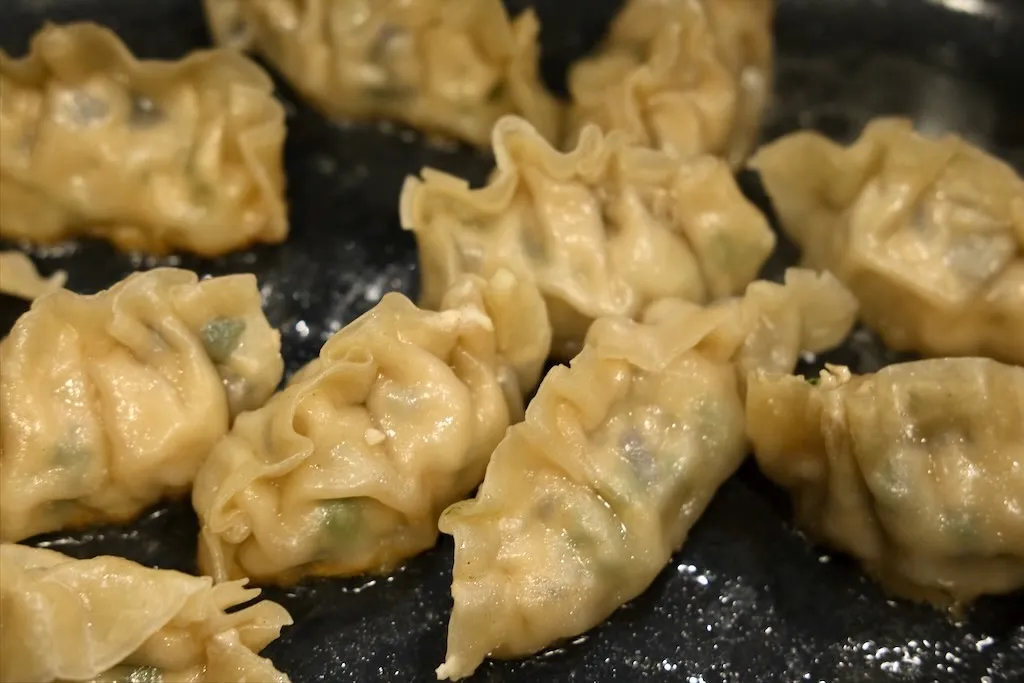
Step 6
- Repeat the process, adding oil and adjusting the heat as necessary, until all of the dumplings are cooked.
- Serve immediately with dipping sauce.
Notes:
- To heat frozen dumplings: Do not thaw. Prepare as directed, but add a bit more water and increase the cooking time to ensure that the filling is heated through and properly cooked (especially if you are using meat, poultry, or seafood in your filling). The internal temperature should register at least 160°F (71°C) before serving.
*If you are very worried about oil splatter, or lack a wide, deep pan, you may sear the potstickers, then transfer them to a lined bamboo steamer to finish cooking. 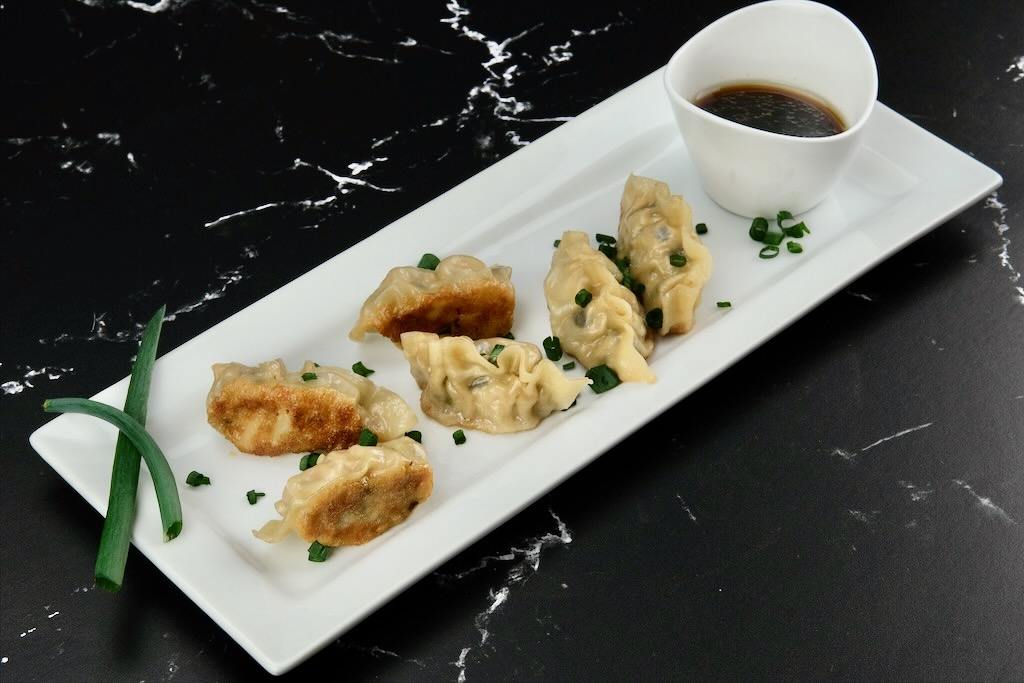
Beverage Pairing
By: Olivia
Because these crispy, savory potstickers are a “choose your own adventure” sort of meal, I want to offer several pairing options. If you want the most versatile wine that will pair with several kinds of dumplings, look no further than Riesling. Union Sacre Fraulien Riesling is a great option because it is a high-acid wine with minerality, peach, and white pepper. If you make these potstickers in honor of the Lunar New Year, you could treat it like the celebration it is with some of your favorite sparkling wine. Finally, if you want to embrace other traditional beverages, consider looking into some of the history of tea and rice wine in China and Southeast Asia.

